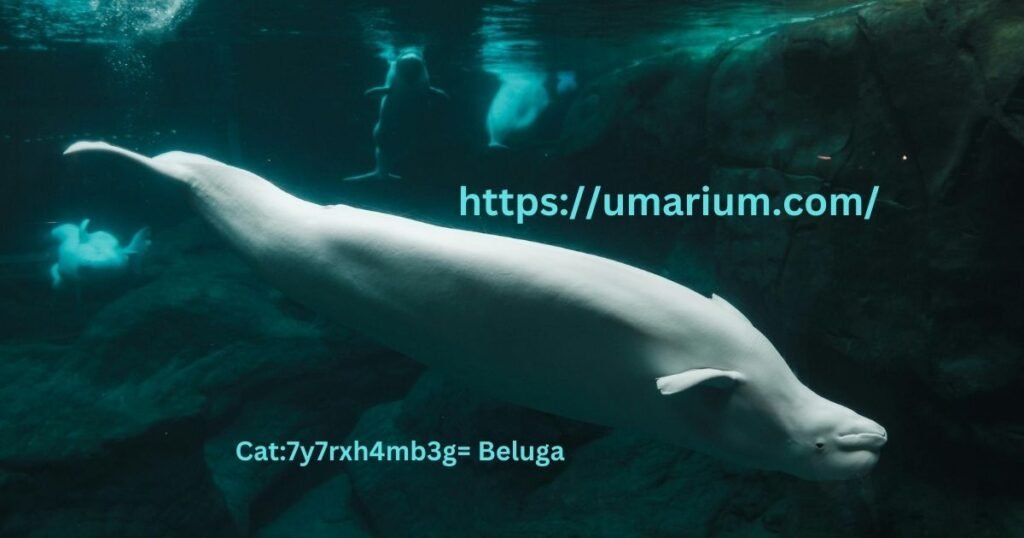Cat:7y7rxh4mb3g= Beluga
Cat:7y7rxh4mb3g= Beluga: Beluga whales, also called the White Whales or the Canaries of the Sea because of their vocal abilities, are one of the inhabitants of the Arctic region. The learned discussion based on the useful knowledge reveals the idea of Belugas as and adapted species that perform functions for the benefit of the ecosystem. They are online representatives for marine conservation and encourage efforts towards conservation all over the globe.
Origins of the Beluga Whale: Cat:7y7rxh4mb3g= Beluga
Beluga whales are found in Arctic and sub-Arctic regions of the world, including Canada, Russia and Greenland. They have some special structures, such as the flexible melon for making sounds for echolocation, the thick blubber for warmth, and the plentiful white color for white washing.
The beluga is an amphibious animal that has the ability to turn its head almost in any direction, provided it has good mobility when confined to restricted areas such as shallow water in which it feeds on other marine animals.
Cultural Significance of the Beluga Whale: Cat:7y7rxh4mb3g= Beluga
Inuit and Chukchi peoples of the Arctic have come to regard the beluga whale as a culturally important animal, representing such values as strength, ability to adapt, and relation with the environment. Indigenous legends and melodies recognize the beluga as a peer of the people and their neighbors inhabiting the Arctic. These communities emphasize responsible hunting and conservation of marine life.
The Digital Influence: Belugas in Social Media and Conservation: Cat:7y7rxh4mb3g= Beluga
Beluga whales became famous over the several years mainly due to the appearance of its videos on social networks where people can observe its interaction with people and other animals and using its whistle-like vocalization sounds. This has created awareness among people, hence making them sensitive to issues such as climate change, habitat destruction and a lack of marine protected area for the beluga.
Even educational channels like WWF and National Geographic conduct awareness on their social media platforms about various effects of climate change, water pollution, and shipping that endanger beluga whales and call upon governments all around the world to come up with serious conservation measures for the mammals. Beluga’s support on social networks helps to increase people’s awareness and motivation for lifting the conservation of and turning it into ambassadors of the Arctic marine life, underscoring the need to protect the fragile environment.
Community Involvement and Beluga Conservation: Cat:7y7rxh4mb3g= Beluga
It comes as no surprise that the conservation of Beluga will involve science, indigenous peoples, authorities, and society in general. Stakeholder involvement is important, for it fosters ownership and action at that level. Vocal and behavioral monitoring includes using independent observation by residents of their presence, changes in the behavior of belugas, and other changes in the surroundings that are information sources for monitoring programs.
To date, local organizations work with communities to establish education interventions on old age and encourage sustainable fishing practices to conserve beluga habitats. Tourism education in the form of workshops and eco-tourism assists in creating awareness of the need to be fearful for the environment, hence bridging the gap between man and his environment.
Also read: Words to make with L P I P S E
Belugas as Indicators of Ocean Health: Cat:7y7rxh4mb3g= Beluga
Beluga whales are important sentinels of ocean health since they feed on a broad range of foods. Where they go may reflect the health of ecosystems they inhabit or formerly inhabited. Belugas revealed that climate change and other pressures by humans on the Arctic are observed through studying their populations. Monitoring their movements, health, and reproductive behavior provides information on the impact of the environment on Arctic marine organisms. Conservation of belugas is conservation of the marine environment.
Challenges Facing Belugas and Conservation Efforts: Cat:7y7rxh4mb3g= Beluga
New ship corridors due to the loss of the reflective ice layer and reduced ice extent pose threats such as noise pollution and acute danger to the species and their environments. That is why hazardous activities such as oil and gas extraction also exist within the facility. Hazardous industrial wastes released in water bodies find their way up the food pyramid and are a threat to the beluga population.
Various conservation agencies are fighting for the creation of protected areas and management of exploitation-threatening belugas, their calving and nursing zones, and feeding areas.
Conclusion
They are strategic for the arctic environment since they symbolize strength and man’s relation with the various and dynamic natural systems. These seem to have some cultural importance for Indigenous peoples and are now involved in conservation.
Also read another article: Dessert:26uv15zsvio= Food : Desserts for Every Occasion
FAQs about Cat:7y7rxh4mb3g= Beluga
- Why are beluga whales called the “canaries of the sea”?
Belugas are known for their wide range of vocal sounds, which is why they’re called “canaries of the sea.” - What threats do belugas face?
Belugas face threats from climate change, pollution, industrial activities, and habitat loss. - How can I help protect beluga whales?
You can support marine conservation organizations, reduce plastic use, and raise awareness on social media to help protect belugas and their habitats.
For More Information, Check It Out Umarium
